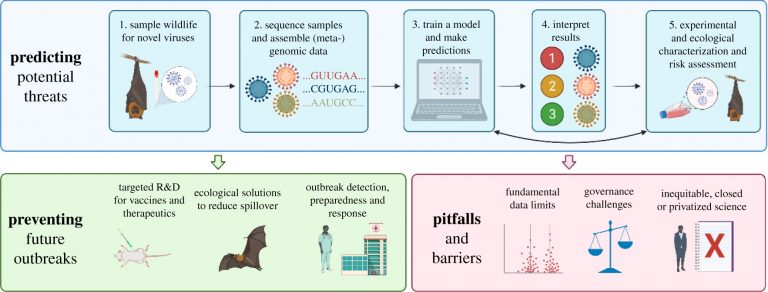Philosophical Transactions of the Royal Society B

RYAN – The Future of Zoonotic Risk Prediction
Article first published online: 20 SEP 2021 in the Philosophical Transactions of the Royal Society B
The Future of Zoonotic Risk Prediction is an opinion piece written by 33 researchers, describing the current toolbox of strategies in zoonotic disease emergence risk prediction, and how the challenges of data availability and sharing, particularly in the international setting, comprise the framework for the future. Dr Sadie J. Ryan is a co-author of this piece, which arose from a workshop on the zoonotic toolbox, as part of the Viral Emergence Research Initiative (viralemergence.org).
ABSTRACT: In the light of the urgency raised by the COVID-19 pandemic, global investment in wildlife virology is likely to increase, and new surveillance programmes will identify hundreds of novel viruses that might someday pose a threat to humans. To support the extensive task of laboratory characterization, scientists may increasingly rely on data-driven rubrics or machine learning models that learn from known zoonoses to identify which animal pathogens could someday pose a threat to global health. We synthesize the findings of an interdisciplinary workshop on zoonotic risk technologies to answer the following questions. What are the prerequisites, in terms of open data, and interdisciplinary collaboration, to the development and application of those tools? What effect could the technology have on global health? Who would control that technology, who would have access to it and who would benefit from it? Would it improve pandemic prevention? Could it create new challenges?
Read the full publication at Philosophical Transactions of the Royal Society B